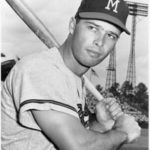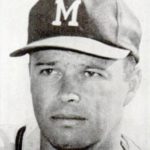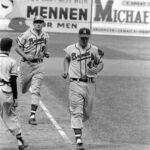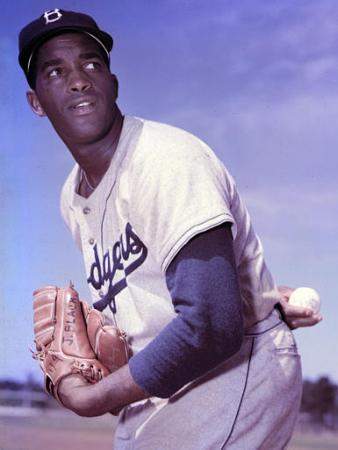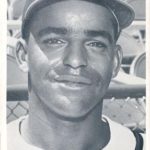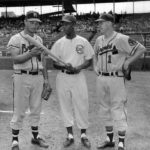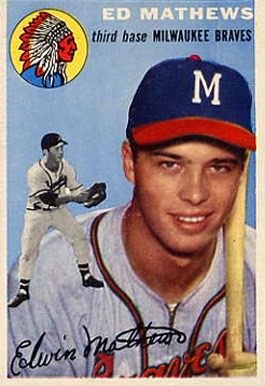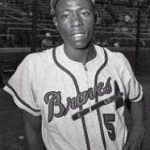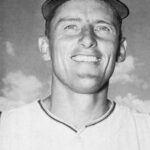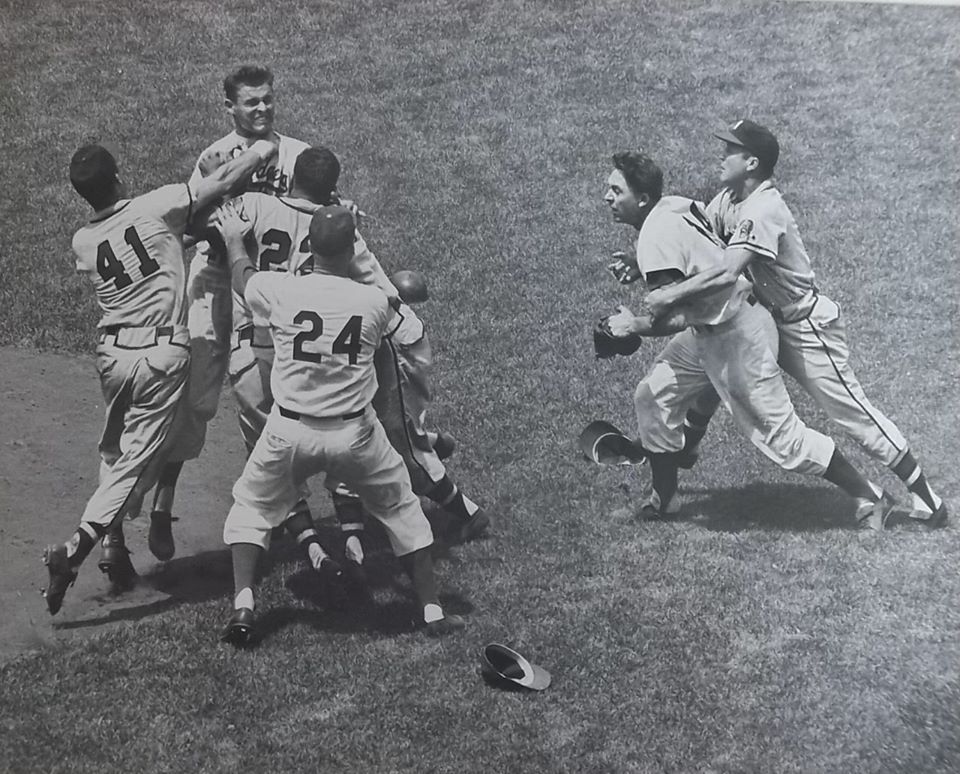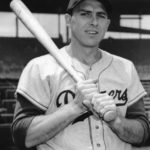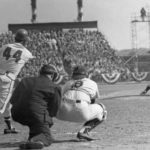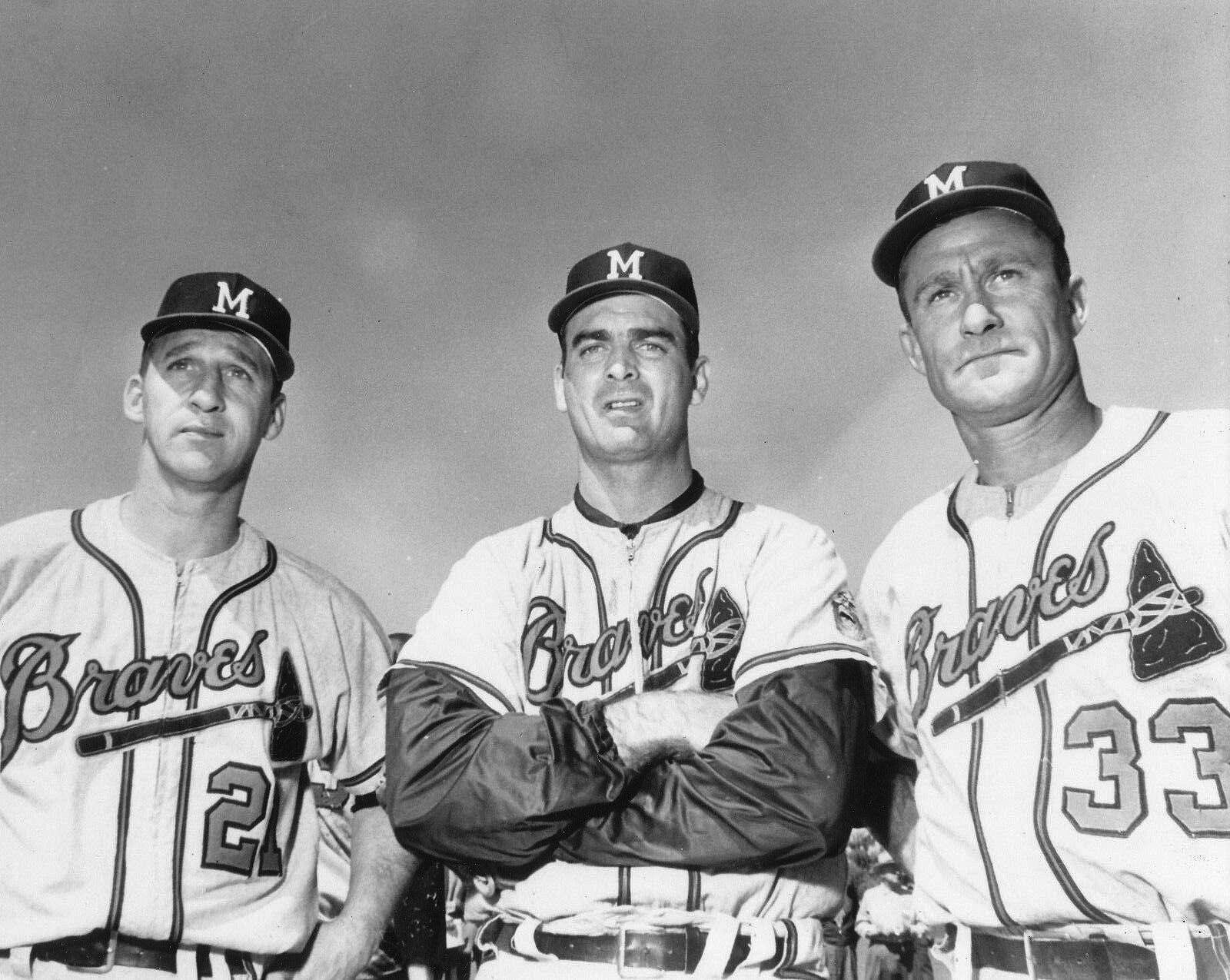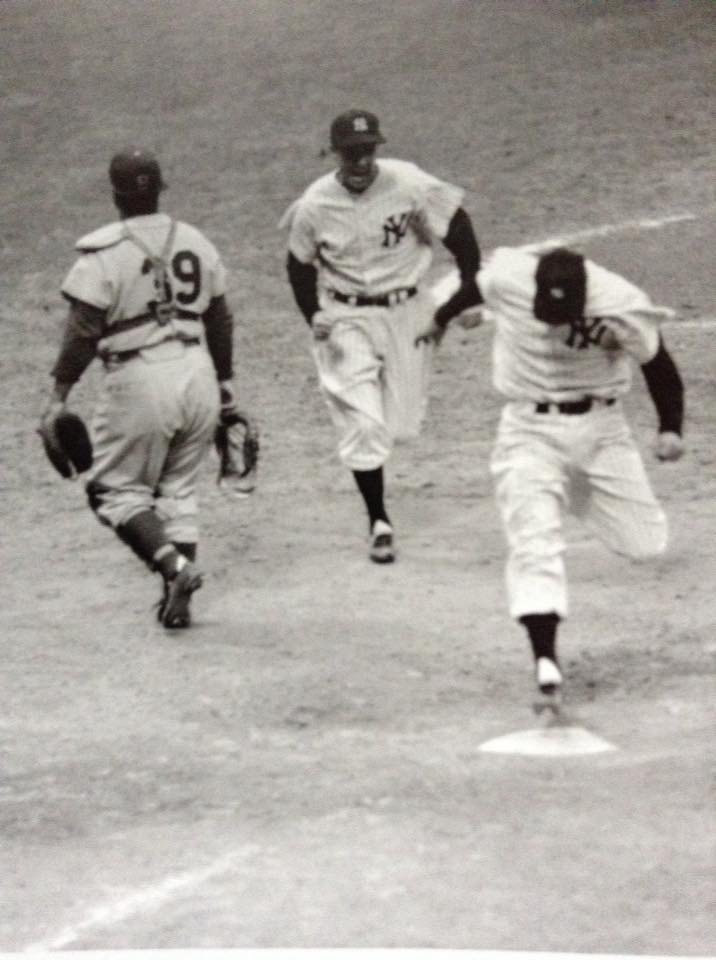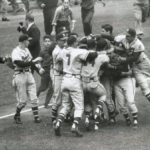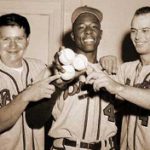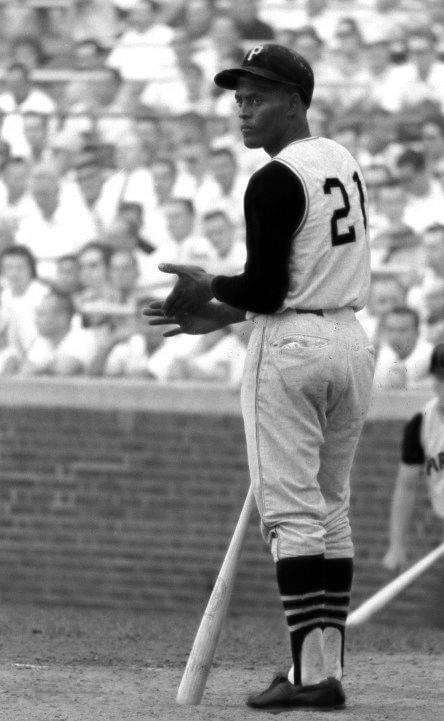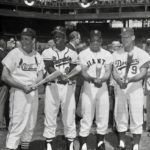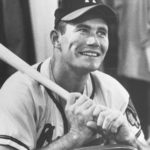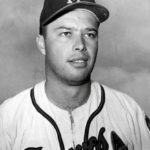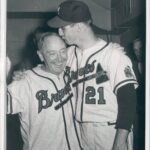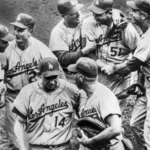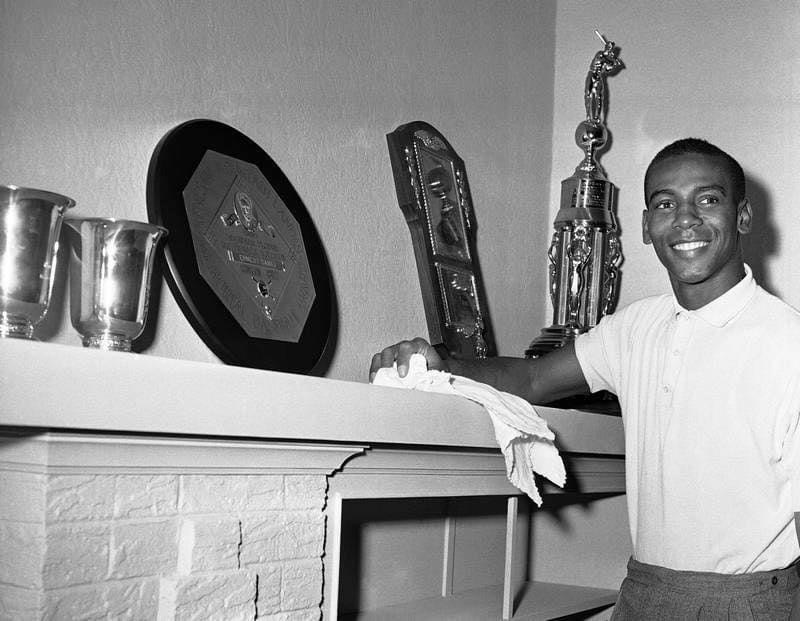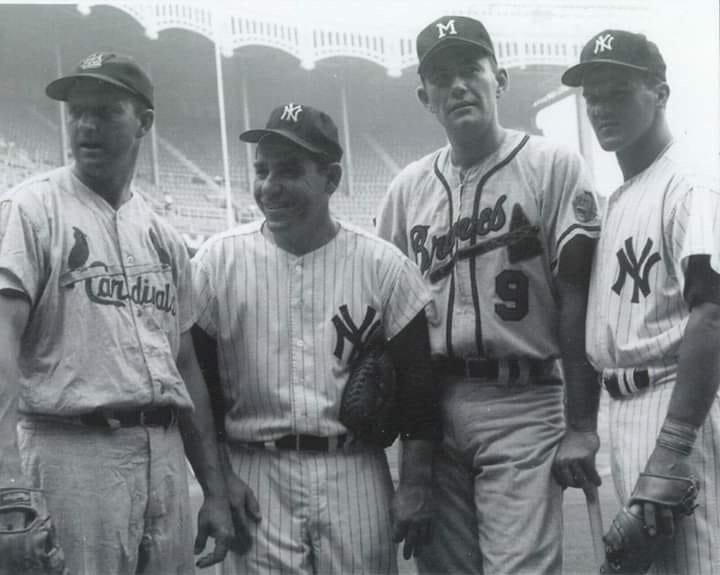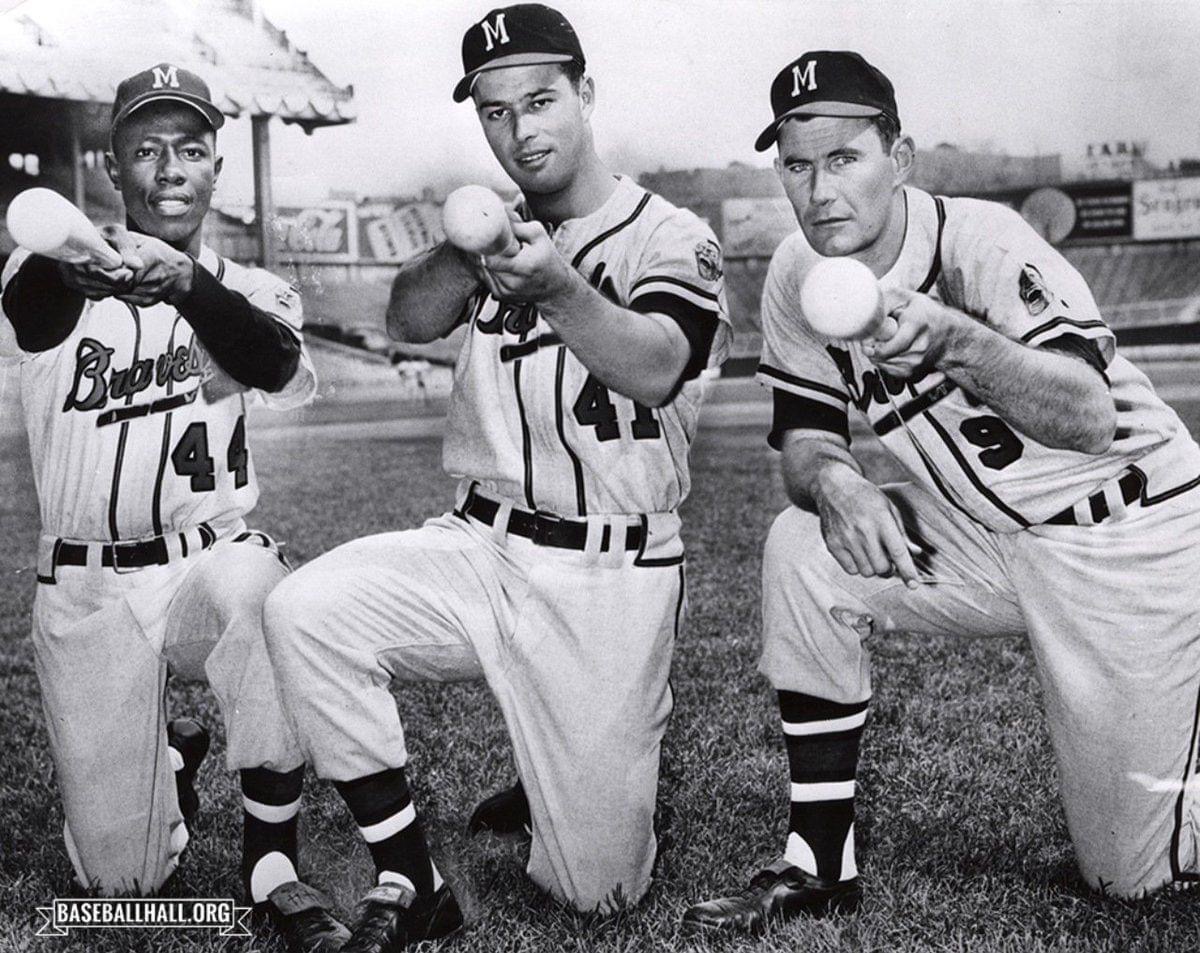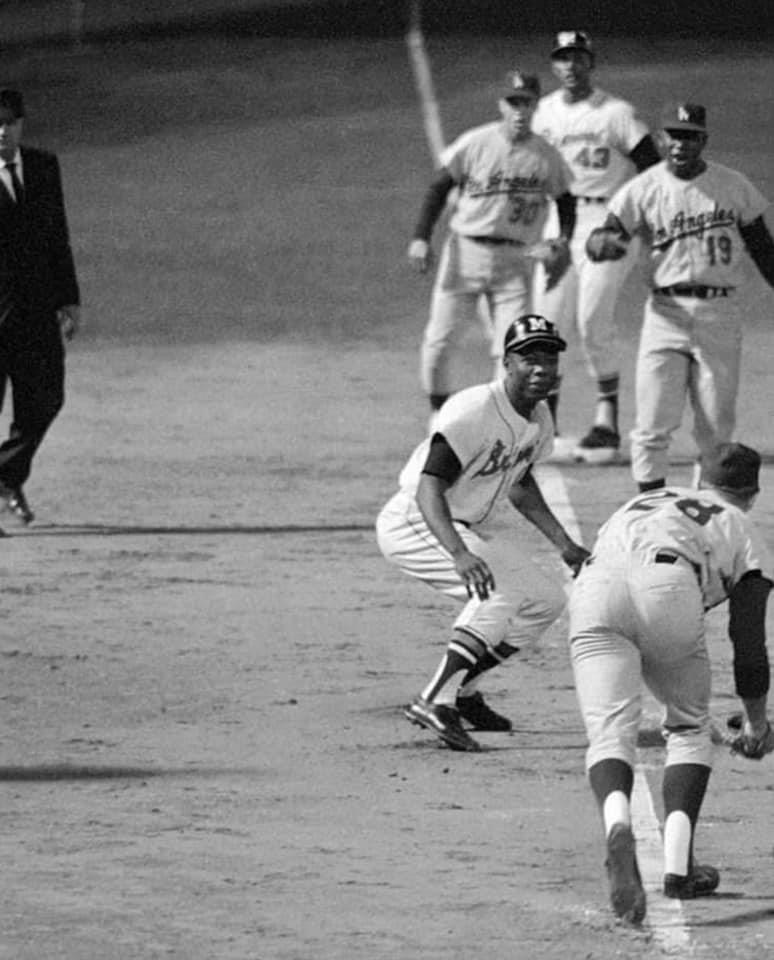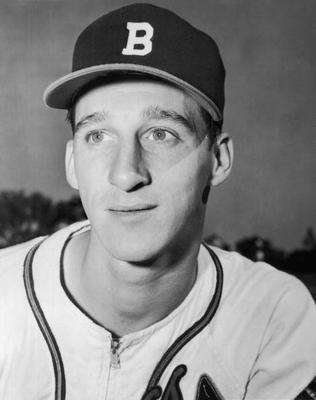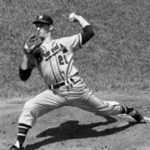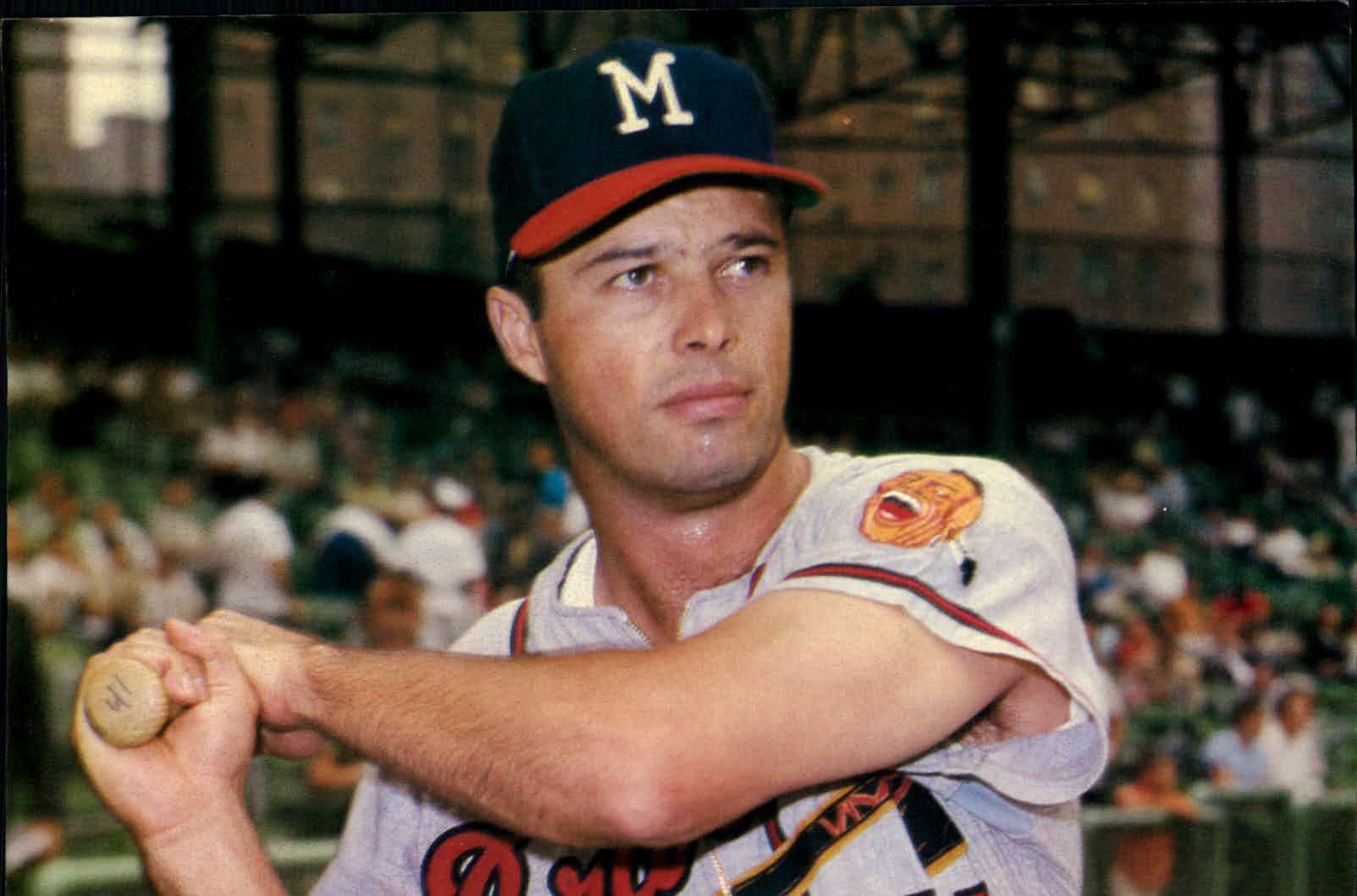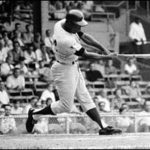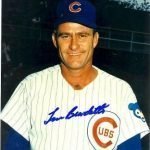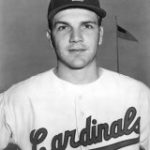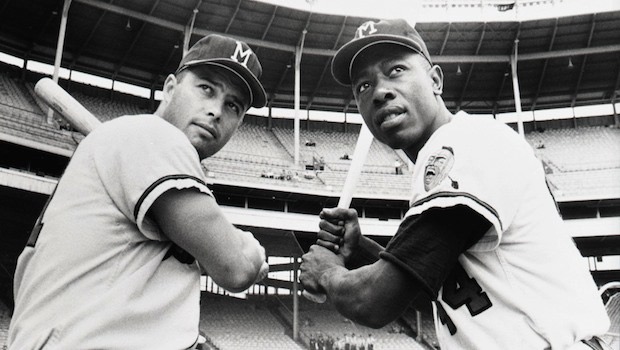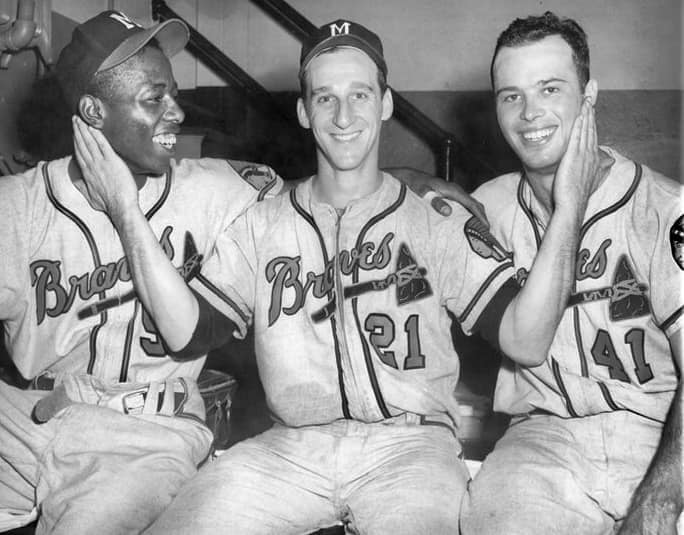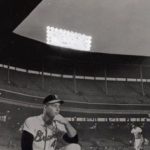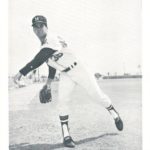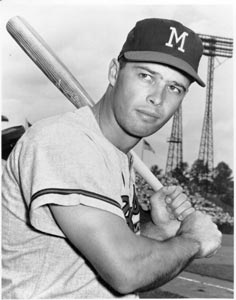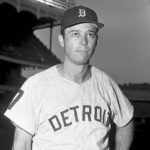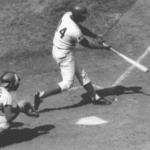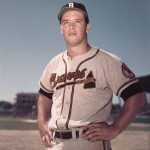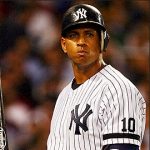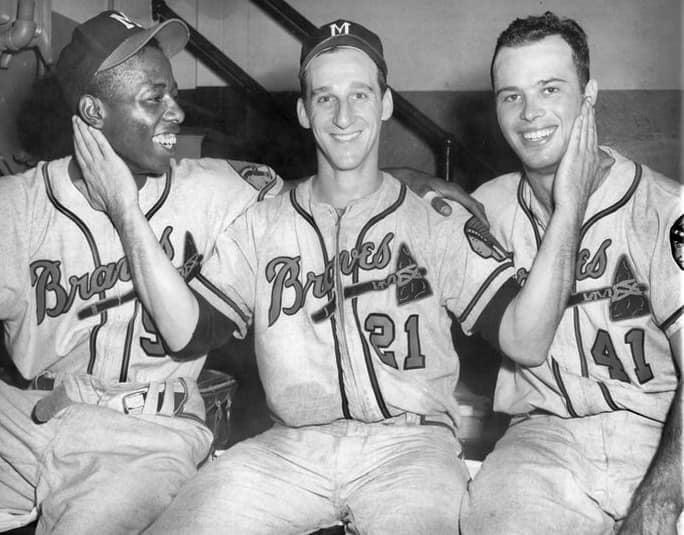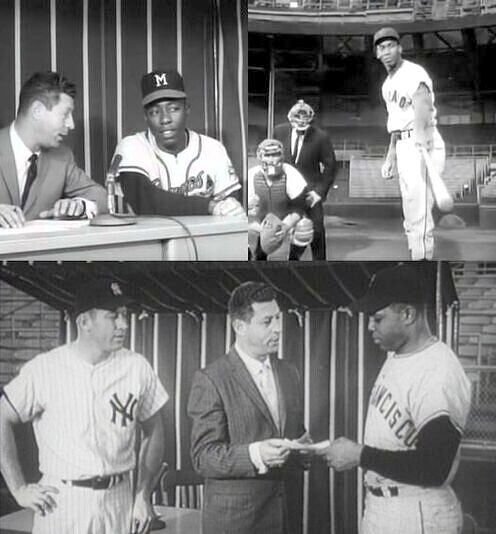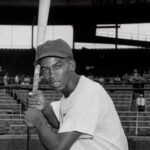Eddie Mathews Stats & Facts
Eddie Mathews
Positions: Third Baseman and First Baseman
Bats: Left • Throws: Right
6-1, 190lb (185cm, 86kg)
Born: October 13, 1931 in Texarkana, TX
Died: February 18, 2001 in La Jolla, CA
Buried: Santa Barbara Cemetery, Santa Barbara, CA
High School: Santa Barbara HS (Santa Barbara, CA)
Debut: April 15, 1952 (8,461st in MLB history)
vs. BRO 3 AB, 0 H, 0 HR, 0 RBI, 0 SB
Last Game: September 27, 1968
vs. WSA 1 AB, 0 H, 0 HR, 0 RBI, 0 SB
Hall of Fame: Inducted as Player in 1978. (Voted by BBWAA on 301/379 ballots)
View Eddie Mathews’s Page at the Baseball Hall of Fame (plaque, photos, videos).
Full Name: Edwin Lee Mathews
Nicknames: Eddie Mattress, Cap’n Eddie, Santa Barbara Bomber or Brookfield Bomber
View Player Bio from the SABR BioProject
Nine Players Who Debuted in 1952
Eddie Mathews
Dick Groat
Harvey Kuenn
Johnny Temple
Jim Rivera
Hoyt Wilhelm
Ron Kline
Stu Miller
Dusty Rhodes
All-Time Teammate Team
Coming Soon
Notable Events and Chronology for Eddie Mathews Career
A natural athlete blessed with tremendous power, a rifle arm, and a durable body, Mathews was the premier third baseman of his era, overshadowing Clete Boyer, the young Brooks Robinson, and Al Rosen. A key member of the excellent Braves teams of the late 1950s. Mathews is the only man to play for the Braves in all three cities they called home: Boston, Milwaukee and Atlanta. When he was traded to the Houston Astros prior to the 1967 season, he cried. Mathews returned to Atlanta after he retired, and managed longtime teammate Hank Aaron when Aaron broke Ruth’s home run record. Mathews and Aaron own the all-time record for most career homers as teammates. He was elected to the Hall of Fame in 1978 on his fifth try. His 512 homers ties him with Ernie Banks; and his 486 homers hit as a third baseman were a record until surpassed by Mike Schmidt.
Eddie Mathews Biography
Heavily scouted in high school, Mathews signed with the Boston Braves in 1949 on the night of his high school graduation. He and his father had scouted major league rosters and had decided that Boston’s Bob Elliott was the third baseman most likely to be replaced in a few years. In less than three years Mathews was starting at third for the Braves; he kept the job for fifteen years and two franchise shifts. Ironically, Mathews played for minor league teams in Atlanta and Milwaukee on his way up.
Mathews’s ascension in the majors coincided with the decline of the Boston Braves. A shy twenty-year-old, he grew up quickly in the empty confines of Braves Field, and while the team slumped to seventh place, he provided one of the few bright spots for the future along with shortstop Johnny Logan and pitcher Lew Burdette. Mathews’s 25 HR (and only 58 RBI) in 1952 included tape measure shots in Philadelphia, St. Louis and Cincinnati, plus three homers on September 27 in Ebbets Field off Joe Black and Ben Wade. His hustle and determination attracted attention throughout the league – particularly in spring training when he bowled over Commissioner Ford Frick and Braves publicist Billy Sullivan while running down a foul fly.
In 1953 the depressed Boston franchise was uprooted to Milwaukee in spring training. The Braves quickly became the darlings not only of the city but the entire upper Midwest region in a brief but intense romance unparalleled in baseball history. Coinciding with the deliverance from Boston was a dramatic improvement in talent as Adcock, Bruton, and Conley, and later Aaron, Buhl, and Covington joined the roster. Sparked by the new surroundings, Mathews improved from .242 with 25 HR and 58 RBI in 1952 to .302 with 47 HR and 135 RBI and became a star virtually overnight. Both of his power categories were career highs. The Braves shot to second place and were contenders through the rest of the decade.
Mathews had a remarkable physique, and his powerful stroke and bat speed were marveled at by opponents. “He swings the bat faster than anyone I ever saw,” commented Carl Erskine. “You think you’ve got a called strike past him and he hits it out of the catcher’s glove.” Even Ty Cobb, not known for his appreciation of the modern ballplayer, was impressed. “I’ve only known three or four perfect swings in my time. This lad has one of them.”
The fast start enjoyed by Mathews is still unsurpassed in baseball history. He hit 190 home runs in his first five seasons, putting him far ahead of Ruth at age 25, and piled up impressive RBI totals, although his average remained below .300 in most seasons. Mathews’ World Series and All-Star statistics belie his excellence. In 10 All-Star games Mathews had three times as many errors (6) as hits. His lifetime All-Star average was .080 and he fielded just .647, but both of his hits were home runs. In three World Series he averaged but .200.
After losing the pennant to the Dodgers by a single game in 1956, the Braves came back the following year with a seven-game World Series triumph over the Yankees. Mathews won Game Four with a 10th-inning homer off Bob Grim, and his backhanded grab of Bill Skowron’s shot down the line closed off the Yankees in Game Seven. Despite hitting only .227, four of Mathews’s five hits were for extra bases. His .292 average, 32 homers and 94 RBIs contributed greatly to the Braves’ regular season success.
In 1958 Mathews suffered through a subpar season at the bat, hitting only .251, and the Braves’ one-year reign as World Champions ended with a Yankee win in seven games. Mathews could only manage a .160 average and struck out 11 times. Although he rebounded to a career high of .306 with a league-leading 46 HR and 114 RBI in 1959, the Braves were beaten by a rejuvenated Los Angeles Dodgers team in a two-game playoff series. Mathews contributed a second-game homer off Don Drysdale.
From 1959 on, Mathews’s home run totals steadily declined. With one exception – the last Milwaukee year (1965), when he belted 32 – they dropped from 46 down to 10 in his last season as a regular, and his batting average, while never high, also showed his diminishing skills. He continued to play third base regularly but he reflected the Braves team as a whole: respectable, but not good enough to contend.
A final 1966 season with the Braves permitted Mathews to play in Atlanta, thus becoming the only three-city ballplayer with the same franchise. After Mathews hit .250 with 16 HR he was shipped to Houston for Dave Nicholson. He had little success in the Astrodome and in July 1967 he was traded to Detroit, which hoped he would regain his former power down the short right-field line in Tiger Stadium, but Mathews produced just nine homers in a year and a half.
Mathews coached for the Braves in the early 1970s and served as manager in 1972-74. His 1973 team featured slugging from former teammate Hank Aaron, Davey Johnson, and Darrell Evans, the first trifecta of 40-HR-season teammates
Best Season
In just his second season, the muscular Mathews powered 47 balls out of the ballpark – leading the NL for the first time. He drove in 135 runners, scored 110 times, and played in every game. His SLG was .627 and he had a .406 OBP (the first of six times he topped .400). He batted .302 on the strength of 175 hits. Aaron had yet to come to the Braves, so Mathews was truly the power player for Milwaukee in ’53.
Factoid 1
Eddie Mathews may have been the first athlete stricken by the “Sports Illustrated Curse.” After appearing on the magazine’s first cover, the slugger injured his hand and missed seven games.
Notes
Mathews was runner-up in both the 1953 and 1959 MVP voting. In ’53, Roy Campanella beat him out, and in ’59 it was Ernie Banks.
@ET-DC@eyJkeW5hbWljIjp0cnVlLCJjb250ZW50IjoicG9zdF90YWdzIiwic2V0dGluZ3MiOnsiYmVmb3JlIjoiTGVhcm4gTW9yZSBhYm91dCB0aGUgdGVhbXMsIHBsYXllcnMsIGJhbGwgcGFya3MgYW5kIGV2ZW50cyB0aGF0IGhhcHBlbmVkIG9uIHRoaXMgZGF0ZSBpbiBoaXN0b3J5IC0gLSAtIC0gLSAtIC0gIiwiYWZ0ZXIiOiIiLCJsaW5rX3RvX3Rlcm1fcGFnZSI6Im9uIiwic2VwYXJhdG9yIjoiIHwgIiwiY2F0ZWdvcnlfdHlwZSI6InBvc3RfdGFnIn19@
Factoids, Quotes, Milestones and Odd Facts
Played For
Boston Braves (1952)
Milwaukee Braves (1953-1965)
Atlanta Braves (1966)
Houston Astros (1967)
Detroit Tigers (1967-1968)
Managed
Atlanta Braves (1972-1974)
Similar: Mike Schmidt, which shows you how good Mathews really was.
Linked: Hank Aaron, Bob Elliott
Best Season, 1953
In just his second season, the muscular Mathews powered 47 balls out of the ballpark – leading the NL for the first time. He drove in 135 runners, scored 110 times, and played in every game. His SLG was .627 and he had a .406 OBP (the first of six times he topped .400). He batted .302 on the strength of 175 hits. Aaron had yet to come to the Braves, so Mathews was truly the power player for Milwaukee in ’53.
Post-Season Appearances
1957 World Series
1958 World Series
1968 World Series
Factoid
Eddie Mathews may have been the first athlete stricken by the “Sports Illustrated Curse.” After appearing on the magazine’s first cover, the slugger injured his hand and missed seven games.
Where He Played: Mathews played 2,181 games at the hot corner, 112 at first base, and 52 in the outfield, most of them in 1963, when the Braves wanted to get Denis Menke some playing time at third base!
Notes
Mathews was runner-up in both the 1953 and 1959 MVP voting. In ’53, Roy Campanella beat him out, and in ’59 it was Ernie Banks.
Hitting Streaks
15 games (1961)
Transactions
Signed as an amateur free agent by Boston Braves (1949); Traded by Atlanta Braves with Arnold Umbach and a player to be named later to Houston Astros in exchange for Dave Nicholson and Bob Bruce (December 31, 1966) – Houston Astros received Sandy Alomar (February 25, 1967; Traded by Houston Astros to Detroit Tigers in exchange for a player to be named later (August 17, 1967) – Houston Astros received Fred Gladding (November 22, 1967); Released by Detroit Tigers (October 28, 1968).
All-Star Selections
1953 NL
1955 NL
1956 NL
1957 NL
1958 NL
1959 NL
1960 NL
1961 NL
1962 NL
Replaced
Braves third baseman Bob Elliott, who was traded to the New York Giants in April of 1952 for Sheldon Jones and cash, to make room for 20-year old Mathews.
Replaced By
Clete Boyer, who was acquired from the New York Yankees in the 1966 off-season.
Best Strength as a Player
Power
Largest Weakness as a Player
Speed
Other Resources & Links
Coming Soon
If you would like to add a link or add information for player pages, please contact us here.



